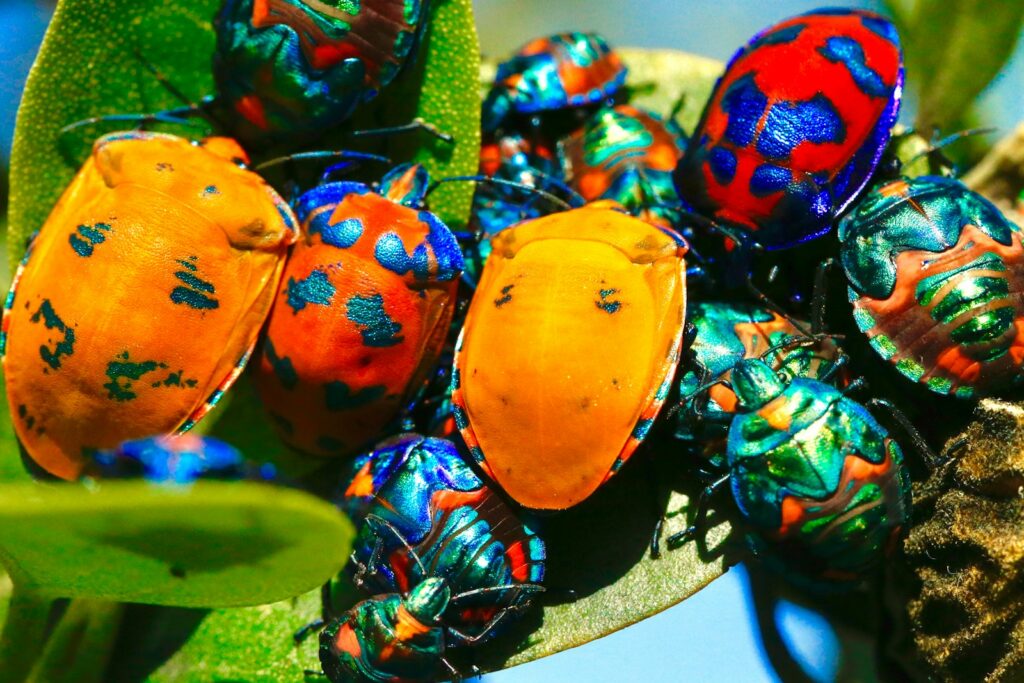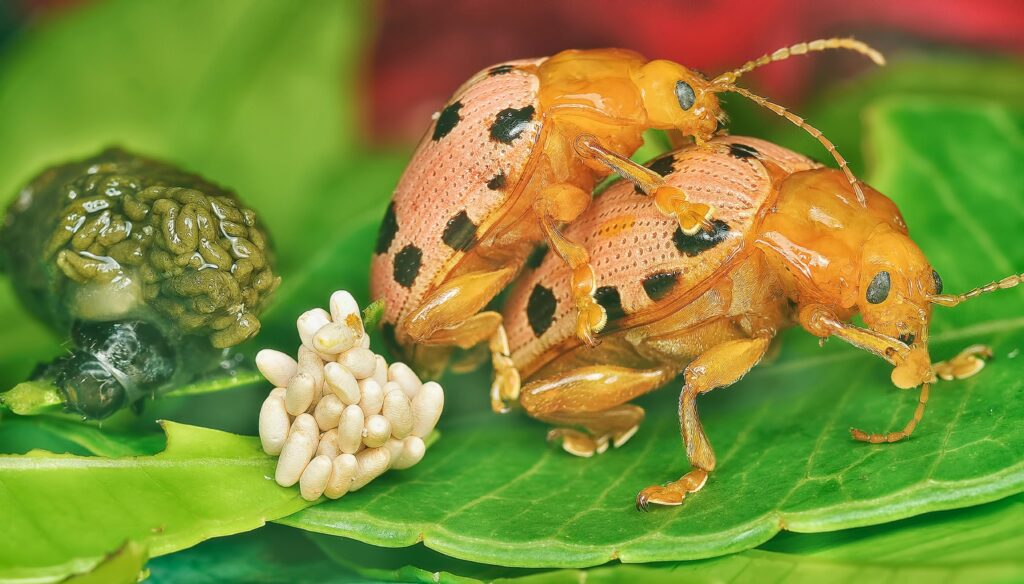
The fascinating world of exotic pet keeping has expanded beyond traditional cats, dogs, and fish to include some of nature’s most brilliantly adorned insects – beetles. With approximately 400,000 species identified worldwide, beetles represent the largest order in the animal kingdom, and among them are some truly spectacular specimens that showcase nature’s artistic palette. These living jewels can transform an ordinary terrarium into a mesmerizing display of iridescent colors and metallic sheens. Not only are colorful beetles visually stunning, but they also tend to be relatively low-maintenance pets compared to many traditional options, making them increasingly popular among entomology enthusiasts and beginners alike. In this article, we’ll explore some of the most vibrant and captivating beetle species that can be ethically kept as pets, along with essential care information to help them thrive.
Rainbow Stag Beetles (Phalacrognathus muelleri)

Native to the rainforests of Australia, the Rainbow Stag Beetle stands as one of the most visually striking beetles available in the pet trade. Males display a remarkable rainbow iridescence that shifts between greens, blues, and purples depending on the viewing angle, earning them their well-deserved name. Their exoskeleton resembles polished metal with a glossy finish that captures and reflects light in the most captivating ways. Females, while less colorful, still possess a beautiful dark green to black sheen that complements their male counterparts. These beetles grow to approximately 2-3 inches in length, with males developing impressive mandibles. Despite their intimidating appearance, the mandibles are primarily used for male-to-male competition rather than aggression toward humans.
Jewel Beetles (Buprestidae Family)
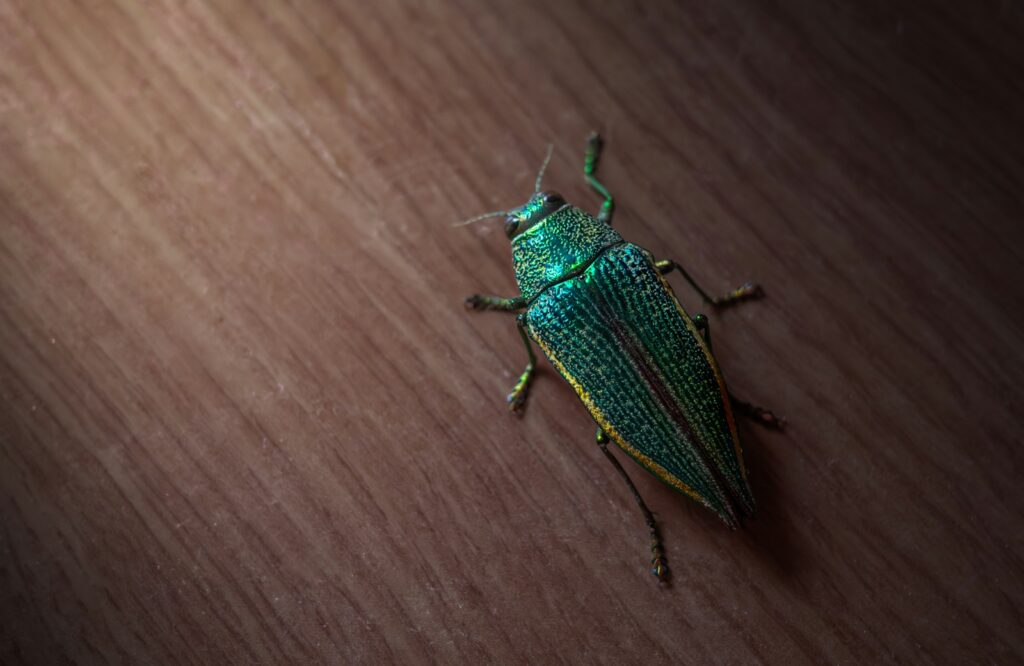
The aptly named Jewel Beetles belong to a vast family of over 15,000 species, many of which are known for their stunning metallic hues. Their hardened forewings, or elytra, shimmer with iridescent greens, blues, purples, and coppery reds that shift in appearance as the beetle moves. These vibrant colors have captivated people for centuries, inspiring decorative arts across cultures. In fact, some Jewel Beetle species have been featured in ancient Egyptian hieroglyphs, and their wings have long been used in traditional jewelry. As pets, they require little space but benefit from having climbing branches and a moist substrate for burrowing. Though their adult lifespan typically ranges from a few months to a year, breeding efforts can sustain a continuous presence of these dazzling insects in your care.
Flower Beetles (Cetoniinae Subfamily)
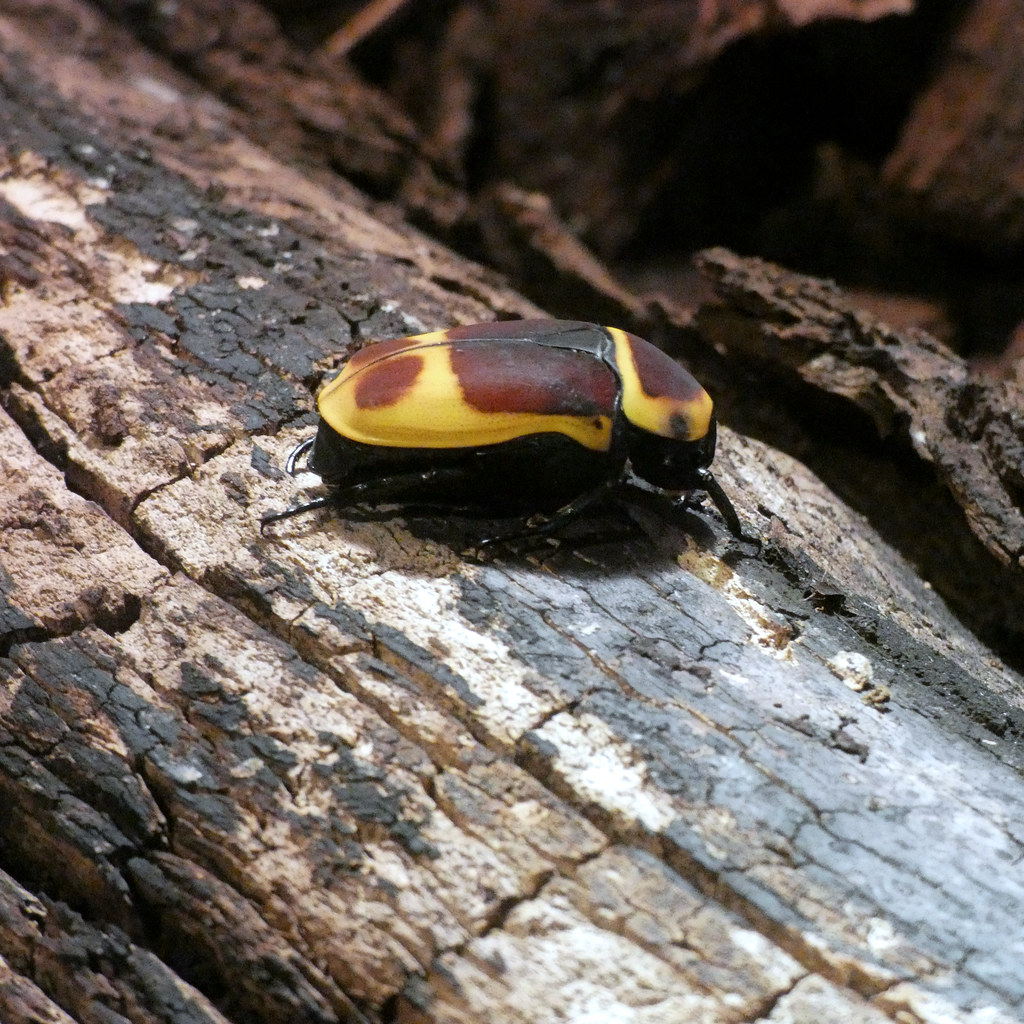
Flower Beetles are among the most approachable and colorful choices for beginner beetle keepers. Species such as Pachnoda marginata, commonly known as the Sun Beetle, showcase bold blends of orange, yellow, and black that make a striking addition to any terrarium. Unlike some beetles that prefer to remain hidden, flower beetles are relatively active during the day, offering more opportunities for observation. Their fruit-based diet is simple to maintain, often using common household items like bananas, apples, and oranges. Many species coexist peacefully, allowing for vibrant community setups where beetles can be seen climbing, feeding, and exploring throughout the enclosure.
Eastern Hercules Beetles (Dynastes tityus)
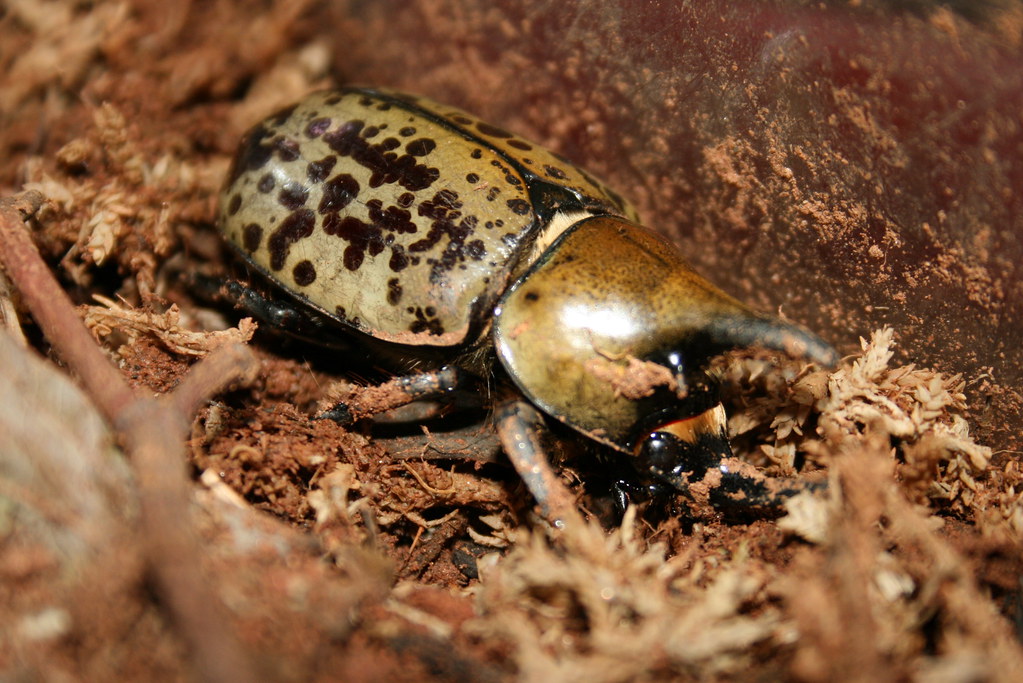
The Eastern Hercules Beetle, found in the eastern United States, brings a unique twist to any beetle collection with its remarkable ability to change color based on humidity. Typically exhibiting a greenish-gray exoskeleton, these beetles can shift to a deep black hue as moisture levels rise, effectively acting as living hygrometers. Males are especially eye-catching, sporting large, horn-like projections reminiscent of rhinoceros beetles that give them a prehistoric look. Reaching sizes of up to 2.5 inches, they are among the larger pet beetles and often serve as striking centerpiece specimens. Despite their imposing appearance, they are gentle in nature and relatively easy to care for, with lifespans of up to 18 months in captivity, longer than many other species. This balance of visual impact and manageable care makes them appealing to both novice and experienced keepers alike.
Blue Death-Feigning Beetles (Asbolus verrucosus)
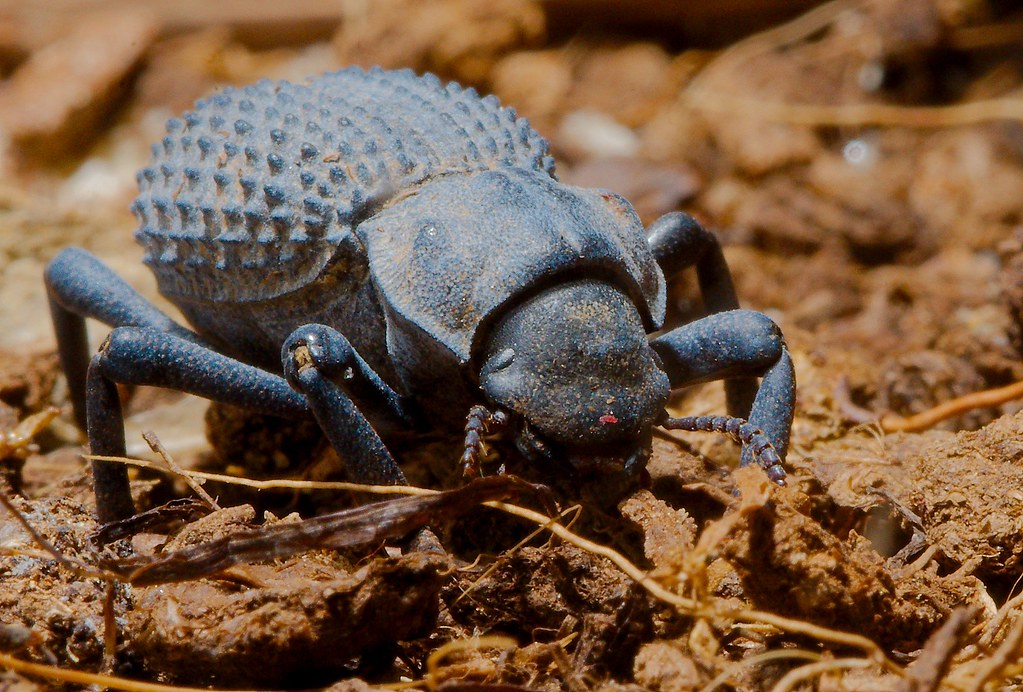
Despite their eerie name, Blue Death-Feigning Beetles are among the most endearing and beginner-friendly beetle species in the pet world. Their distinctive dusty blue appearance comes from a waxy coating that helps them conserve moisture in the arid deserts of the southwestern United States. True to their name, they exhibit a fascinating defense behavior. When disturbed, they fall motionless onto their backs and remain still for minutes, convincingly playing dead until the threat has passed. These resilient beetles thrive in captivity with minimal care and can live for several years, making them ideal for new invertebrate keepers. Their communal nature also makes them well-suited to group housing, where they often cluster together, creating lively flashes of blue across the sandy terrain of a desert-themed enclosure.
Golden Tortoise Beetles (Charidotella sexpunctata)
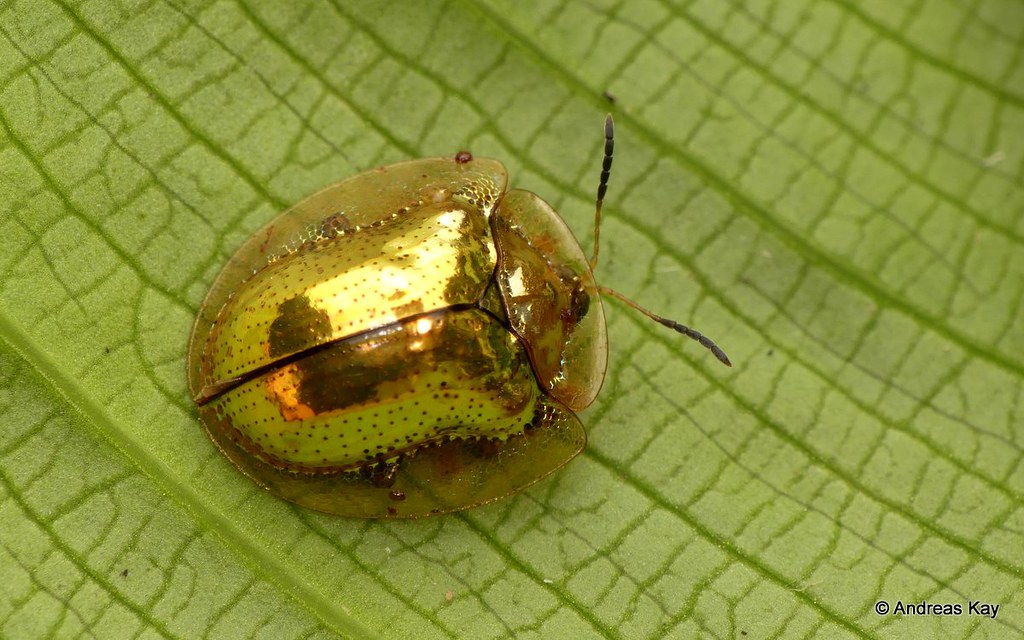
Golden Tortoise Beetles are striking examples of nature’s metallic brilliance, with reflective gold surfaces that shine like polished metal. One of their most fascinating traits is their ability to shift from brilliant gold to a reddish-brown with black spots when disturbed. A transformation caused by microscopic structural changes in their exoskeleton. Despite their exotic appearance, these beetles are native to North America and are relatively easy to care for in captivity. Their diet is simple, consisting mainly of sweet potato and morning glory leaves. Though they are quite small, measuring only 5 to 7 millimeters, their vivid coloration makes them stand out clearly in any enclosure, requiring little space while offering plenty of visual appeal.
Frog-Legged Leaf Beetles (Sagra buqueti)

Frog-Legged Leaf Beetles are among the most visually striking insects, displaying vivid metallic hues of purple, blue, and green that rival fine jewelry or custom automobiles. Native to Southeast Asia, these beetles are named for the males’ dramatically enlarged hind legs, which they use in mating competitions to establish dominance. Their shimmering coloration may serve a defensive function as well, acting as a warning signal to predators through aposematic coloration, suggesting potential toxicity. While undeniably beautiful, these beetles require more specialized care in captivity, including higher humidity and a diet of specific host plants. As such, they are best suited for experienced keepers who can accommodate their particular environmental and dietary needs.
Christmas Beetles (Anoplognathus Species)
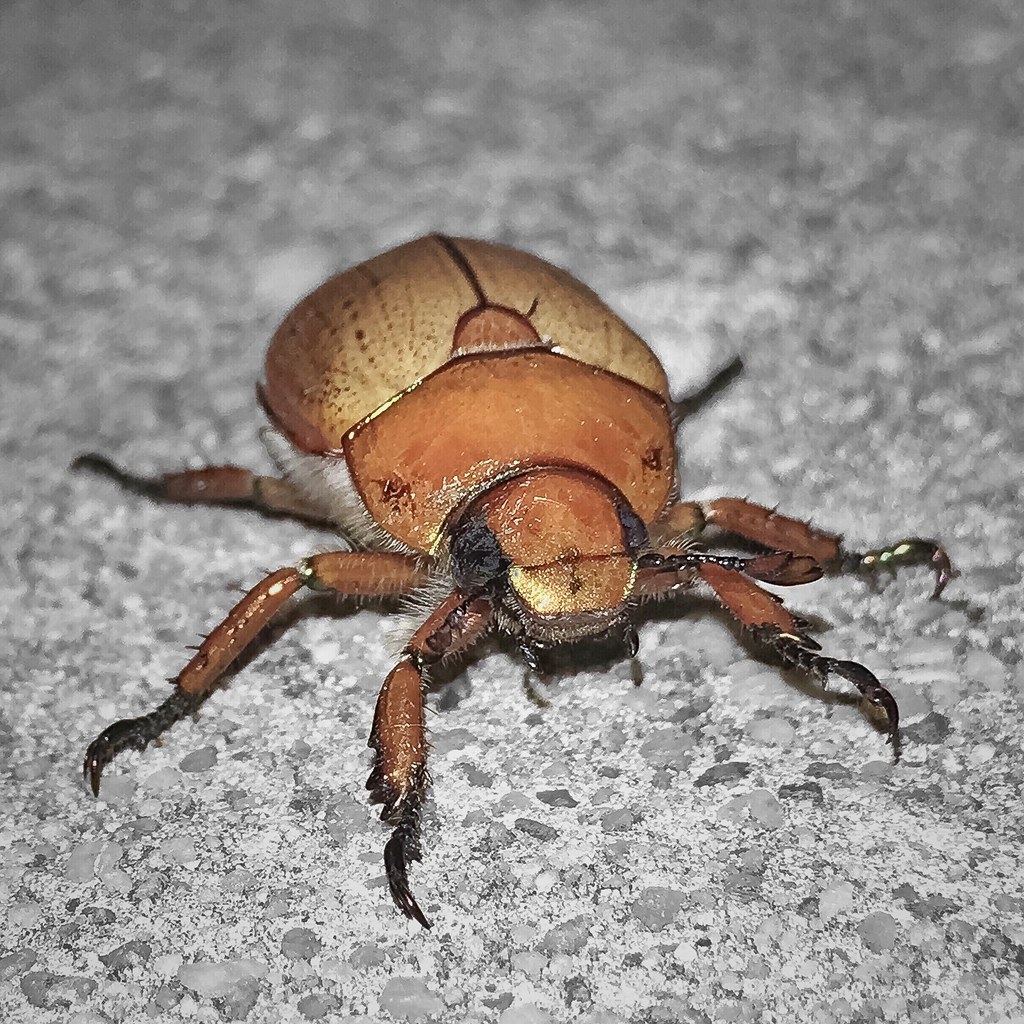
Christmas Beetles, named for their seasonal appearance during the Australian summer Christmas season, display a mesmerizing array of colors from golden-green to iridescent copper and rainbow hues. Their rotund bodies and relatively calm disposition make them particularly appealing as display specimens in naturalistic terrariums. Unlike some more specialized beetles, Christmas Beetles feed on eucalyptus leaves in the wild, but in captivity, they adapt well to a diet of various native tree leaves. The metallic quality of their exoskeleton creates an almost liquid appearance as they move about their habitat, reflecting light in dynamic patterns that captivate observers. When kept in appropriate conditions with adequate space and proper ventilation, these beetles can become conversation-starting pets that showcase Australia’s unique entomological heritage.
Setting Up The Perfect Beetle Habitat

Creating an ideal environment for colorful beetles begins with choosing the right enclosure, usually a well-ventilated terrarium with a secure lid to prevent escapes. The type of substrate you use depends on the species. Forest beetles do best in a mix of decaying wood, leaf litter, and coconut fiber, while desert species prefer a blend of sand and coconut fiber. Humidity is another important factor and can vary widely. Rainforest beetles need levels around 70–80%, while desert beetles thrive in much drier conditions. Temperature matters too, with most tropical beetles doing well between 75–85°F (24–29°C). A small heat mat placed under one part of the terrarium can help maintain this range and create a gentle temperature gradient. Adding elements like branches, cork bark, and plants not only makes the habitat more attractive but also gives your beetles places to climb and hide, which helps reduce stress and encourages natural behavior.
Feeding Your Colorful Beetle Pets

The dietary needs of pet beetles vary significantly between species, with proper nutrition being essential to maintaining their vibrant colors and overall health. Many adult beetles thrive on a diet of fruits like bananas, apples, and oranges, which should be removed and replaced every few days to prevent mold growth. Protein sources are crucial for certain species, particularly in their larval stages, with options including specialized beetle jelly, commercial beetle diets, or protein-rich foods like dog food soaked in water. Flower beetles and fruit beetles generally prefer sweet, ripe fruits and may benefit from occasional protein supplements. Some specialized beetles, particularly stag beetles and rhinoceros beetles, require fermented hardwood or special wood-based substrates that they can feed on throughout their life cycle. Providing a shallow water dish or regular misting meets most beetles’ hydration needs without risking drowning, though exact requirements vary by species.
Breeding Colorful Beetles At Home
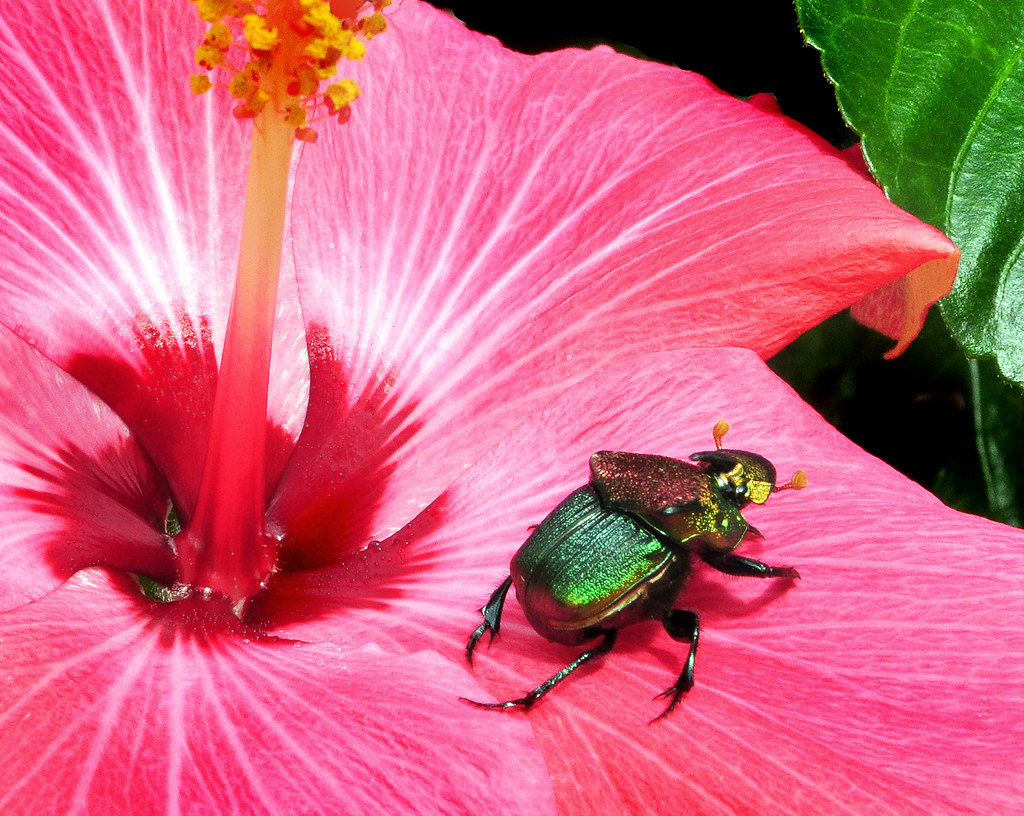
Breeding colorful beetles at home can be a deeply rewarding experience, offering the chance to observe the full life cycle from egg to adult. The process usually starts by identifying males and females, which often differ in size, mandible shape, or other physical features depending on the species. Once paired, most species need a specific type of substrate for egg-laying, typically, a mix of rotting wood, leaf litter, or a commercial beetle breeding blend that supports healthy larval development. The larval stage is usually the longest phase, lasting anywhere from several months to even a few years, during which the larvae consume large amounts of food and grow significantly. Patience is key, as complete metamorphosis can be a slow process. For larger species like stag or rhinoceros beetles, it may take over two years to go from egg to fully formed adult.
Ethical Considerations and Legal Requirements

Before bringing colorful beetles into your home, it’s important to consider both the legal and ethical aspects of ownership, which can vary widely depending on your location. Many regions have strict regulations on the import and possession of certain beetle species to prevent the risk of invasive populations disrupting local ecosystems. To ensure you’re making a responsible choice, always purchase from reputable breeders who provide proof of captive breeding rather than sourcing from the wild, as wild collection can threaten native populations and biodiversity. In the United States, for instance, some states require permits to keep particular beetle species, especially those considered potential agricultural pests. Beyond legality, responsible beetle keeping also involves planning for the full duration of their life cycle, ensuring proper care from egg to adult, and making thoughtful decisions about rehoming or humane disposal if you’re no longer able to care for them.
The Benefits of Keeping Colorful Beetles as Pets

Keeping colorful beetles as pets offers more than just visual enjoyment, they also provide unique educational value. These captivating insects give both children and adults the chance to witness metamorphosis, observe natural behaviors, and explore ecological adaptations up close. Their compact housing needs make them ideal for those living in small spaces who still want the experience of caring for an exotic pet. Compared to more traditional pets, beetles generally require less daily attention while still offering fascinating interactions to observe. Additionally, the growing community of beetle enthusiasts offers plenty of opportunities for connection, whether through online forums, social media groups, or local entomology clubs where keepers can exchange care tips, breeding experiences, and a shared appreciation for these remarkable creatures.
Conclusion
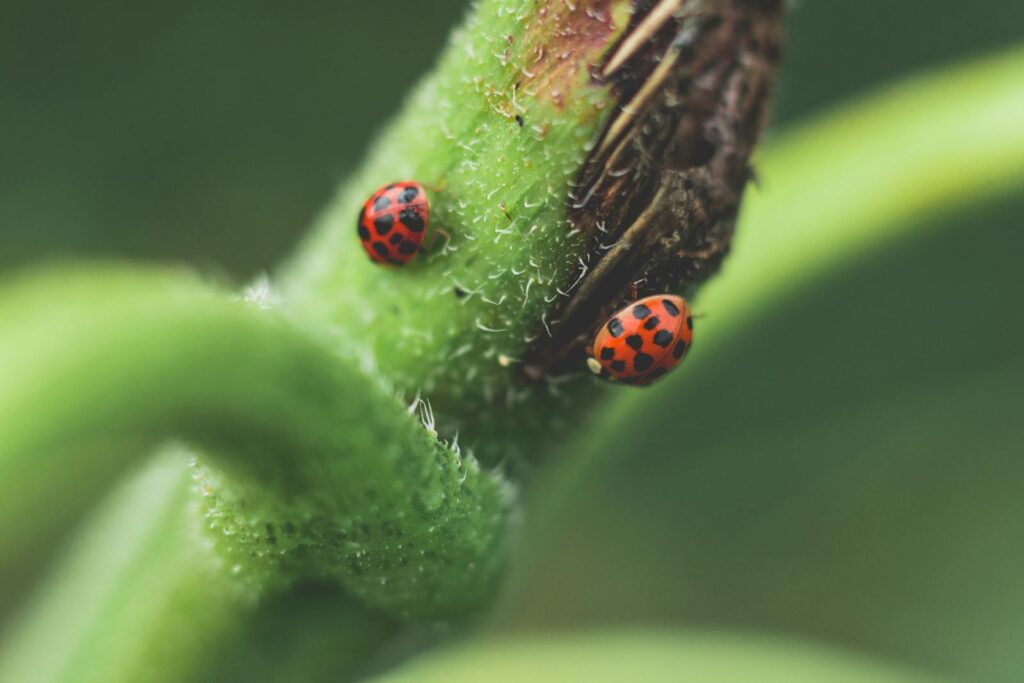
The world of colorful pet beetles offers a unique opportunity to observe some of nature’s most spectacular living jewels up close. From the rainbow iridescence of stag beetles to the golden gleam of tortoise beetles, these insects showcase colors that rival precious gems and exotic metals. As interest in invertebrate pets continues to grow, beetles represent an accessible entry point that combines relatively straightforward care with extraordinary visual appeal. Whether you’re an experienced entomologist or simply someone looking for a unique, low-maintenance pet, the vibrant world of colorful beetles has something to offer. With proper research, care, and ethical sourcing, these remarkable insects can provide years of fascination while serving as living ambassadors for the incredible diversity of the natural world.

